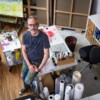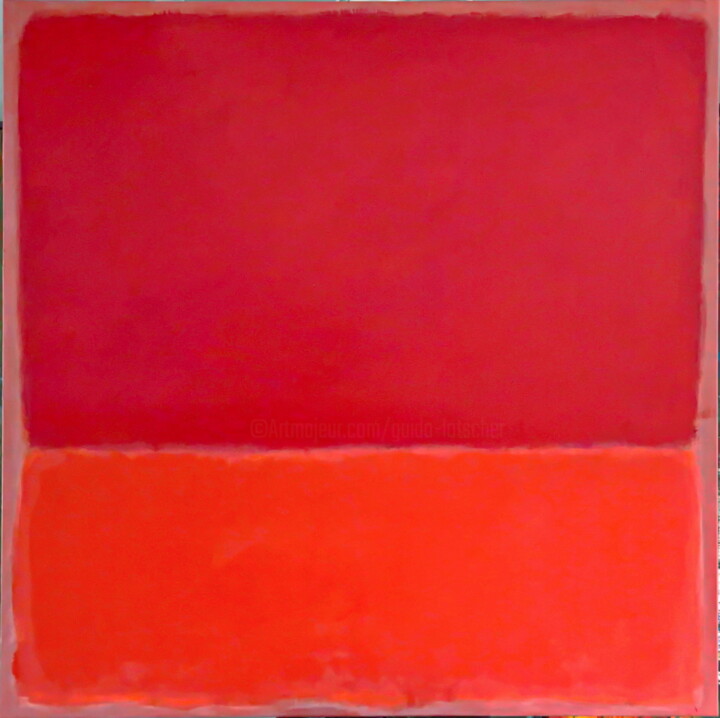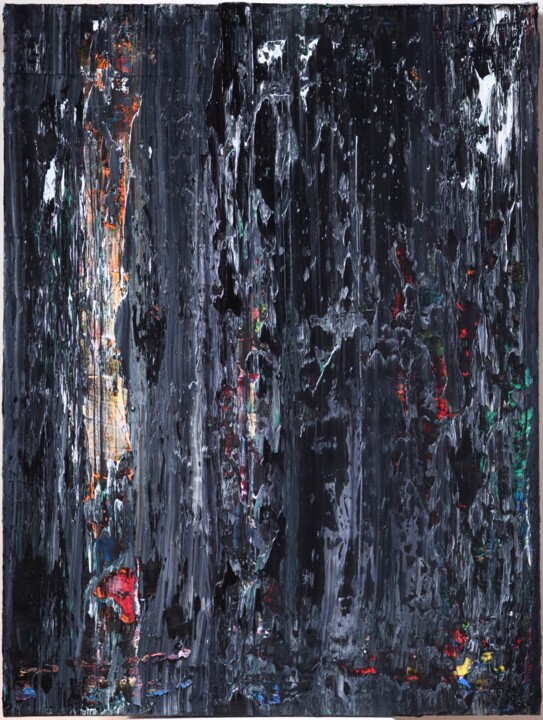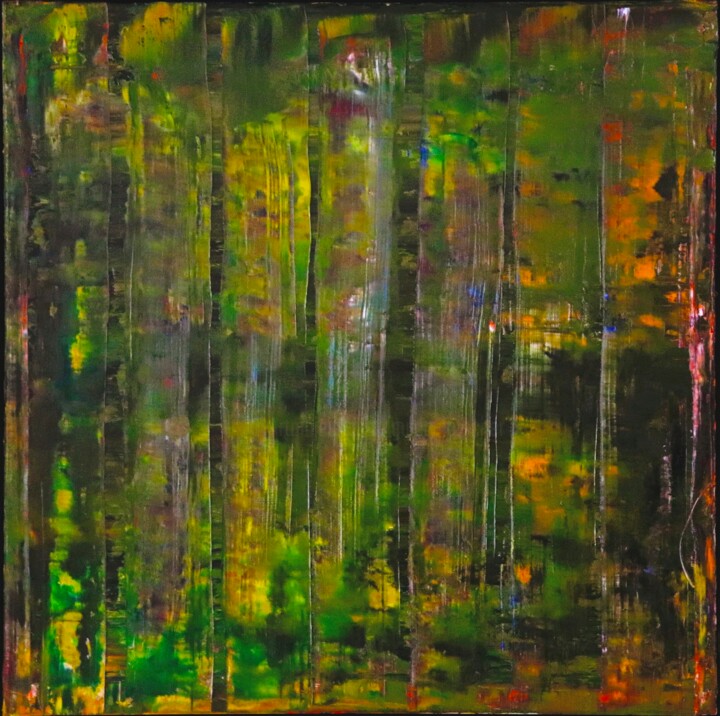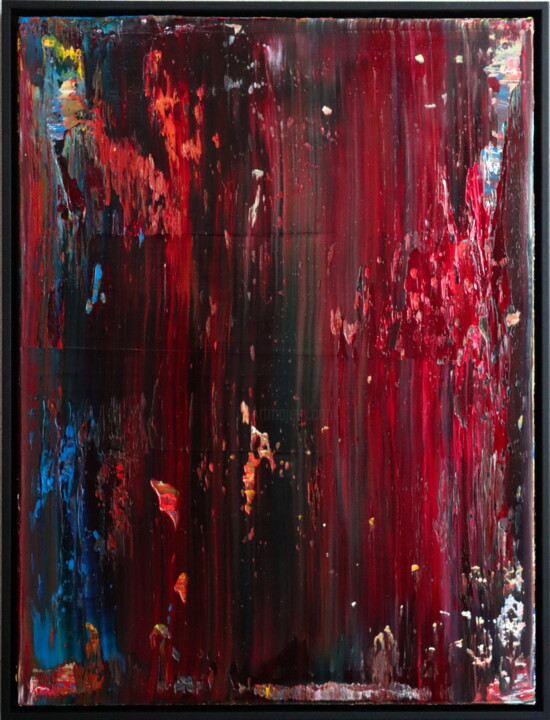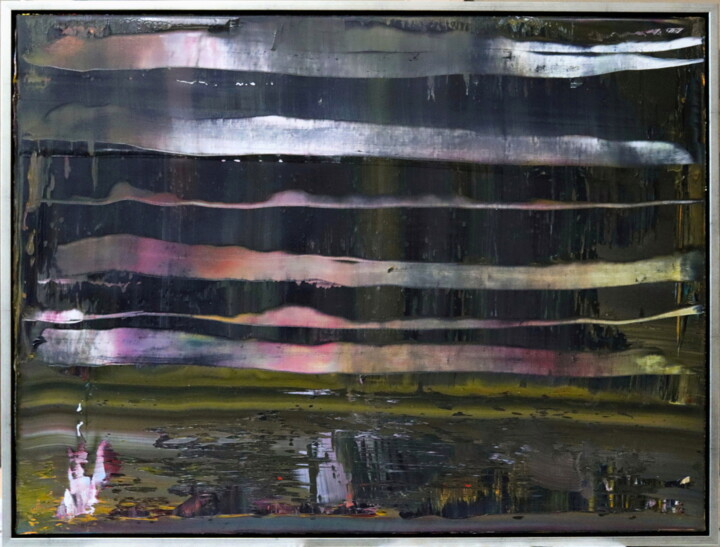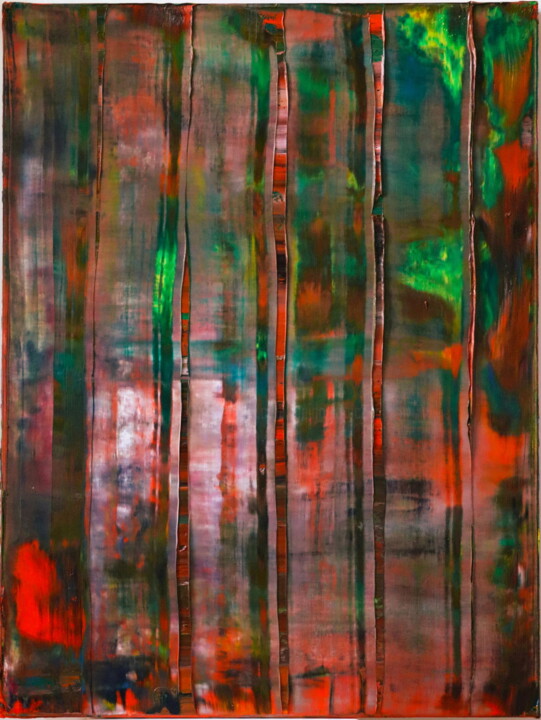What inspired you to create art and become an artist? (Events, feelings, experiences...)
A profound change in the company’s philosophy and a desire for professional reorientation led me in 2015, after careful consideration of various career options, to finally dedicate myself to freelance visual arts – the realization of a childhood dream.
What is your artistic background? What techniques and themes have you experimented with so far?
Through studying relevant literature, observation, and "experimenting" (including failures), I acquired the necessary knowledge and practical skills. My first significant area of focus was Mark Rothko's "metaphysical" color field painting. In this process, I experimented with liquid oil paints, alkyd and damar resins, pigmented iron dispersion, and the use of fine, wide watercolor brushes (up to 150 mm), achieving convincing results over countless layers of paint.
In my further artistic development, I turned to abstract-expressive squeegee techniques, where I recognized parallels to "metaphysical" color field painting. This approach involves applying and scraping away thick layers of oil paint using wide squeegees (up to 120 cm), spatulas, and brushes, in a multi-layered manner. The combination of addition and subtraction with tools and paint results in compositions that often evoke spatial or landscape-like representations while remaining non-representational.
What three aspects set you apart from other artists and make your work unique?
It is likely my entirely self-taught and therefore influence-free approach, as well as my search for a non-representational and introspective style of painting that "lives and breathes."
Where does your inspiration come from?
I draw inspiration from the works of great painters such as Monet, Mark Rothko, and Gerhard Richter. Their creations embody harmony, drama, expression, and depth. They evoke deep reverence in me and guide my artistic path.
What is your artistic approach? What visions, emotions, or feelings do you wish to evoke in the viewer?
I aim to move the viewer emotionally with quiet, meditative, yet simultaneously energetic and powerful images, achieved through the connection of the sensual with the metaphysical.
What is the creation process for your works? Is it spontaneous or involves a lengthy preparatory process (technical, inspired by art classics, or other sources)?
The squeegee technique – unlike color field painting – is a spontaneous method shaped by randomness, arbitrariness, inspiration, and destruction. It results in the emergence of a piece that is unplanned, carrying within it a unique, artistic, and expressive statement. However, challenges in execution arise rather quickly and become increasingly complex as the process unfolds.
Are there innovative aspects in your work?
Can you tell us which ones? The squeegee technique itself is already unique, as it involves "painting" without brushes. The choice of my squeegees likely makes the difference, as they are flexible and support the spontaneous painting process.
Do you have a format or medium that you feel most comfortable with?
If so, why? I feel most comfortable with oil paints because they allow wet-on-wet work. This is particularly important in the squeegee technique, where the paint needs to be "malleable."
Where do you produce your works?
At home, in a shared studio, or in your own workshop? And how do you organize your creative work in this space? My works are created in my own studio. I work on stretched canvases attached to a wooden wall (3 x 2.4 m) that is suspended from the ceiling and additionally anchored to the floor.
Does your work lead you to travel, to meet new collectors, or for fairs or exhibitions? If so, what does it bring you?
I have participated in several international fairs in Switzerland and was represented at the art KARLSRUHE in Germany in 2023. Additionally, I presented my works in two solo exhibitions and participated in group exhibitions. I also periodically organize exhibitions in my studio.
Fortunately, I have been able to sell at least one work at each of these events.
How do you envision the development of your work and your career as an artist in the future?
Every artist dreams of an international career, with their works being recognized by collectors and art enthusiasts. It is an ambitious goal, considering the immense competition and the challenge of establishing oneself without connections or gallery representation. Nevertheless, I am aware of the potential of my works.
What is the theme, style, or technique of your latest artistic production?
My core theme remains the squeegee technique. However, I am consistently evolving the expressive-abstract approach through observation and experience, using all the means at my disposal. Ultimately, every new work feels like a fresh beginning for me.
Can you tell us about your most significant fair experience?
At my first solo exhibition in 2018, in the picturesque town of Sempach in the canton of Lucerne, Switzerland, an art enthusiast and collector became aware of me through a newspaper article. He was captivated by my work and subsequently acquired 17 pieces of color field paintings for the "Art in Architecture" project as part of a new bank building.
If you could have created one famous artwork from art history, which one would you choose? And why?
I would choose the painting Orange, Red, Yellow (1961) by Mark Rothko. The painting radiates a veiled, flowing, and floating light. It simultaneously conveys drama and meditative depth. A hypnotic work that, unfortunately, is no longer exhibited after being purchased in 1961 by an anonymous buyer for $86.3 million.
If you could invite a famous artist (dead or alive) to dinner, who would it be? How would you suggest spending the evening?
I would love to invite Gerhard Richter to dinner. Afterward, I would propose visiting his studio. I am deeply interested in the profound reasons behind his wise statement: "My paintings are smarter than I am."





 Olimpia Gaia Martinelli
Olimpia Gaia Martinelli
